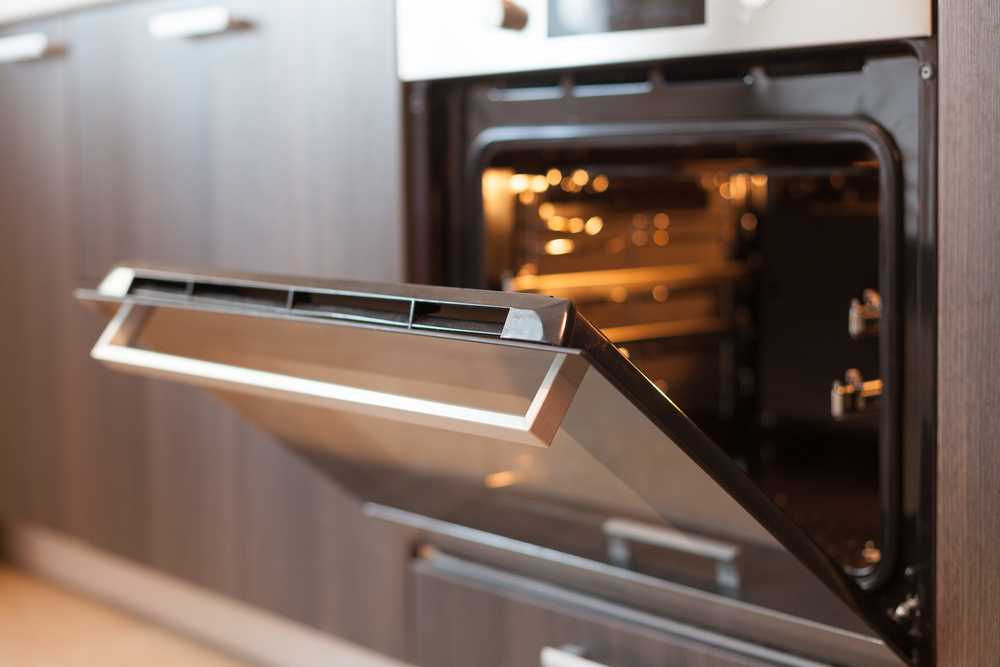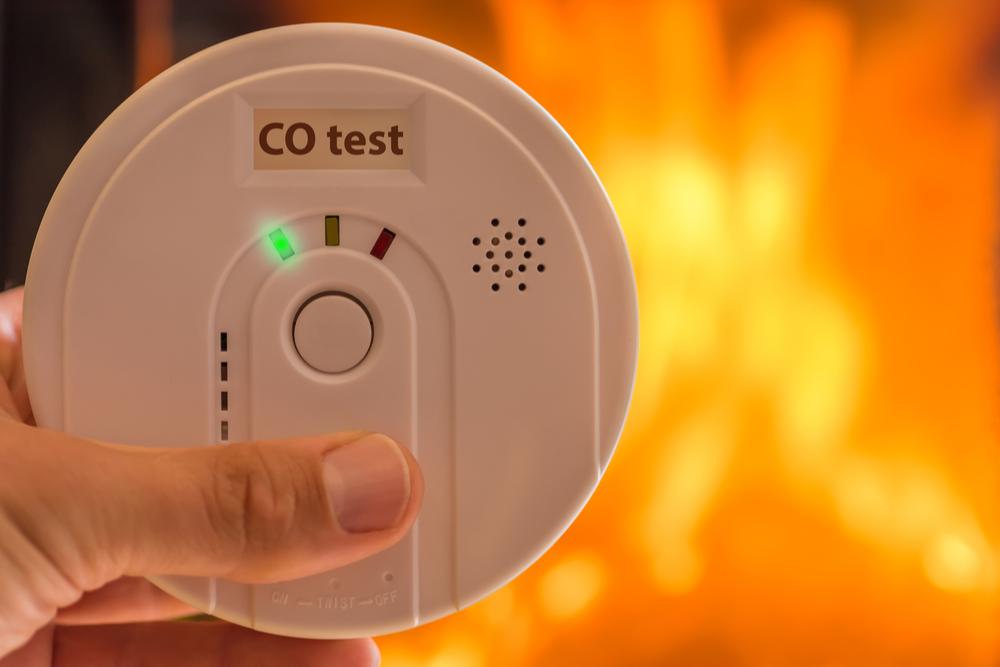As the owner of an electric oven, you may have heard some concerning stories surrounding carbon monoxide gas. Can an electric stove produce it? How risky is it? Should you get a different oven instead?
We’ll cover everything you need to know to keep your kitchen safe.
Before we can address if an electric oven can release carbon monoxide, we have to know what the gas is and what it can do. Carbon Monoxide is:
Dubbed the “silent killer,” carbon monoxide is dangerous. It affects cell metabolism, and the body’s reactions to it deprive cells of oxygen. The whole body is affected by carbon monoxide or CO, but the heart and brain are at a higher risk. Indeed, this gas can powerfully affect someone with cardiovascular or respiratory disease.
There are symptoms of CO poisoning to know. While they can be similar to the flu, prolonged exposure can cause death to animals and people. The symptoms are:

Potential Symptoms of Carbon Monoxide Poisoning
Knowing more about CO poisoning helps, and you probably noticed the list above shows that stoves produce carbon monoxide.
Generally speaking, electric stoves do not release carbon monoxide. Nevertheless, some situations can cause an electric stove to emit carbon monoxide fumes.
Unlike gas stoves, unless the electric appliance operates with propane, natural gas, or wood-burning, they do not cause carbon monoxide poisoning. Why? Electricity does not release carbon monoxide.
So you might think that if you don't have a gas oven or any other type of gas appliance in your kitchen, you have no risk of increased CO levels that could pose a threat. This isn't necessarily the case. You likely have other systems within your home - like a hot water heater - that burns natural gas to heat water.
Additionally, even electric appliances can be a source of a carbon monoxide leak by means of an uninentional fire.
A fire can release carbon monoxide. Because of the burning hazard, a few electrical appliances have a small risk of producing carbon monoxide fumes.
If a fire were to burn itself out completely, no toxic gasses would be left in the air. However, most fires do not entirely burn, so what they leave behind is carbon monoxide. Therefore, any appliance that can create fire can also produce carbon monoxide.
The amount of carbon monoxide released is not necessarily enough to cause CO poisoning. The danger occurs when the gasses are in an enclosed room. When there’s no ventilation and an individual breathes it in, the oxygen in red blood cells becomes replaced with carbon monoxide.
The Occupational Safety and Health Administration (OSHA) has determined that 50 ppm (parts per million) over an average of eight hours is the standard for what is considered safe within a workplace. That means 50 parts carbon monoxide for every million parts oxygen in eight hours.
OSHA states that 100 ppm is a violation of their rules, while 500 ppm means individuals are in imminent danger.
The crucial thing to remember is that these numbers are for the workplace, generally a building much more spacious than a home, and they are calculated based on healthy young males. Age, physical activity, and existing cardiovascular and respiratory health conditions may all cause further complications.
Therefore, when addressing carbon monoxide levels in the home, EPA guidelines are best to follow. While there are no standards for carbon monoxide levels inside the home, the EPA suggests to follow the numbers used for outdoor air. These numbers are 9 ppm over eight hours and 35 ppm for one hour.
Electric ovens do not give off fumes, except under exceptional circumstances. During the self-cleaning mode, the burning chemicals can create carbon monoxide in the fumes.
In addition, the enamel can release toxic fumes if the stove is left on too long or overnight. Adequate ventilation should take care of these problems. It is always best to call a professional if smells from the oven are making anyone sick.
Ventilation is key to keeping fumes at bay. When an electric oven works correctly and is well-ventilated, the system will disperse any toxic fumes into the outside atmosphere without affecting those inside the house. Therefore, it is essential not to block ventilation holes or vents.
An electric oven can give off fumes in four ways.
All these situations are avoidable. Proper ventilation to remove the fumes will limit the level of fumes released into the home for the first three scenarios. The oven should never get left on overnight. Follow that rule and you won't have to worry about fumes from burning enamel. And finally, ensuring electrical wiring is up to code will take care of any problems with the electricity.
Pests sometimes chew through electrical wires in the walls, so keep an eye out for signs of pesky wall-dweller invasions.
Yes, for the same reasons they can give off fumes. Remember, carbon monoxide isn't generated through electricity. However, it can be produced through burning, which is the number one reason that an electric oven will produce carbon monoxide.

Electric Ovens Can Produce Carbon Monoxide if Burning is Actively Occuring
Keeping the proper ventilation for possible hazards such as burning food or the enamel coating of the stove will decrease the risk of carbon monoxide releasing into the air.
The body can handle very small ppms of carbon monoxide. Generally, the danger only comes when the levels climb for hours at a time. However, to avoid lifelong problems due to carbon monoxide exposure or the possibility of death, always have a carbon monoxide detector installed in the house.
Yes. If the dose was small enough, carbon monoxide can be flushed from the body. However, carboxyhemoglobin is a chemical compound formed when carbon monoxide and hemoglobin combine in the bloodstream. The half-life of this compound in fresh air is four hours. Unfortunately by then it may have caused irreversible damage to the body.
Just getting fresh air is not a realistic solution to carbon monoxide exposure. Medical treatment is necessary. Oxygen and a hyperbaric chamber are necessary to speed recovery, reduce the damage from carbon monoxide, and reduce the chance of any long-term medical problems.
The most important thing to do is get a carbon monoxide detector. Every state has its own requirements, laws, and regulations regarding this device, so make sure to be familiar with them when purchasing. When excessive amounts of CO gas is detected, the carbon monoxide alarm will be sounded to protect the inhabitants of your home.
Many states require a CO detector to be installed in all new construction, and one state, Alaska, requires installation by the state fire marshal. If unsure, contact the housing authority. When in doubt, it’s always better to have a professional install something like that.

Carbon Monoxide Detectors are Able to Detect Unhealthy Levels of CO in Your Home
Another tip is to have all electrical appliances checked once a year. Even if the home does not have a gas stove or other fuel-burning appliances, it’s better to be safe. Appliances in excellent working condition will be safe and give you peace of mind. It’s worth it.
Make sure the ventilation system is clear and in working order. Good ventilation is the key to keeping the home clear of carbon monoxide.
Also, have the electrical checked once a year. Keeping the electrical work up to code will reduce the possibility of carbon monoxide from a fire. If there are indications of pests that chew on electrical wiring, make sure to have the appropriate company eliminate them.
Another way to eliminate carbon monoxide in the home is to have your heating units replaced with direct-vent sealed-combustion units.
